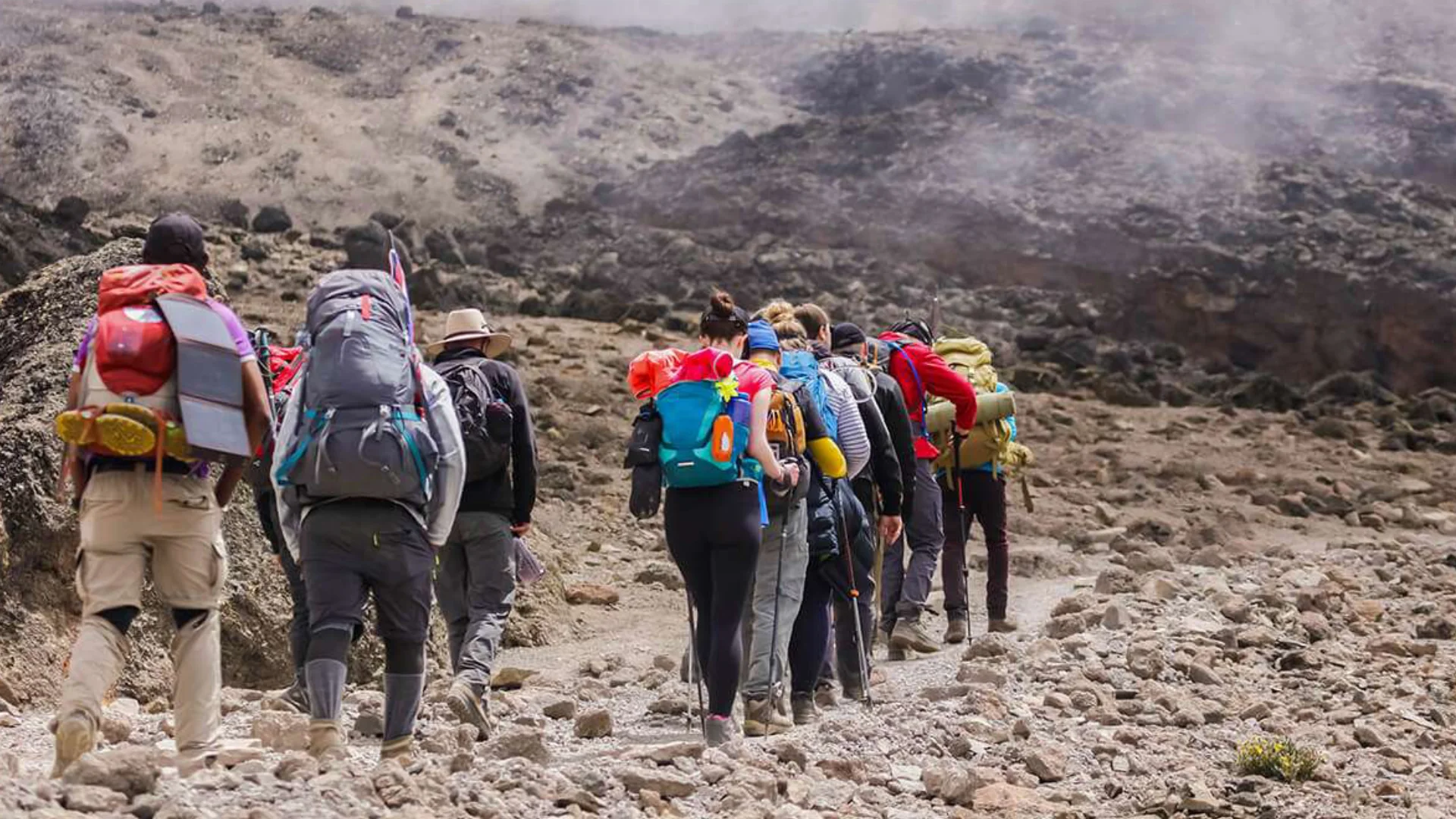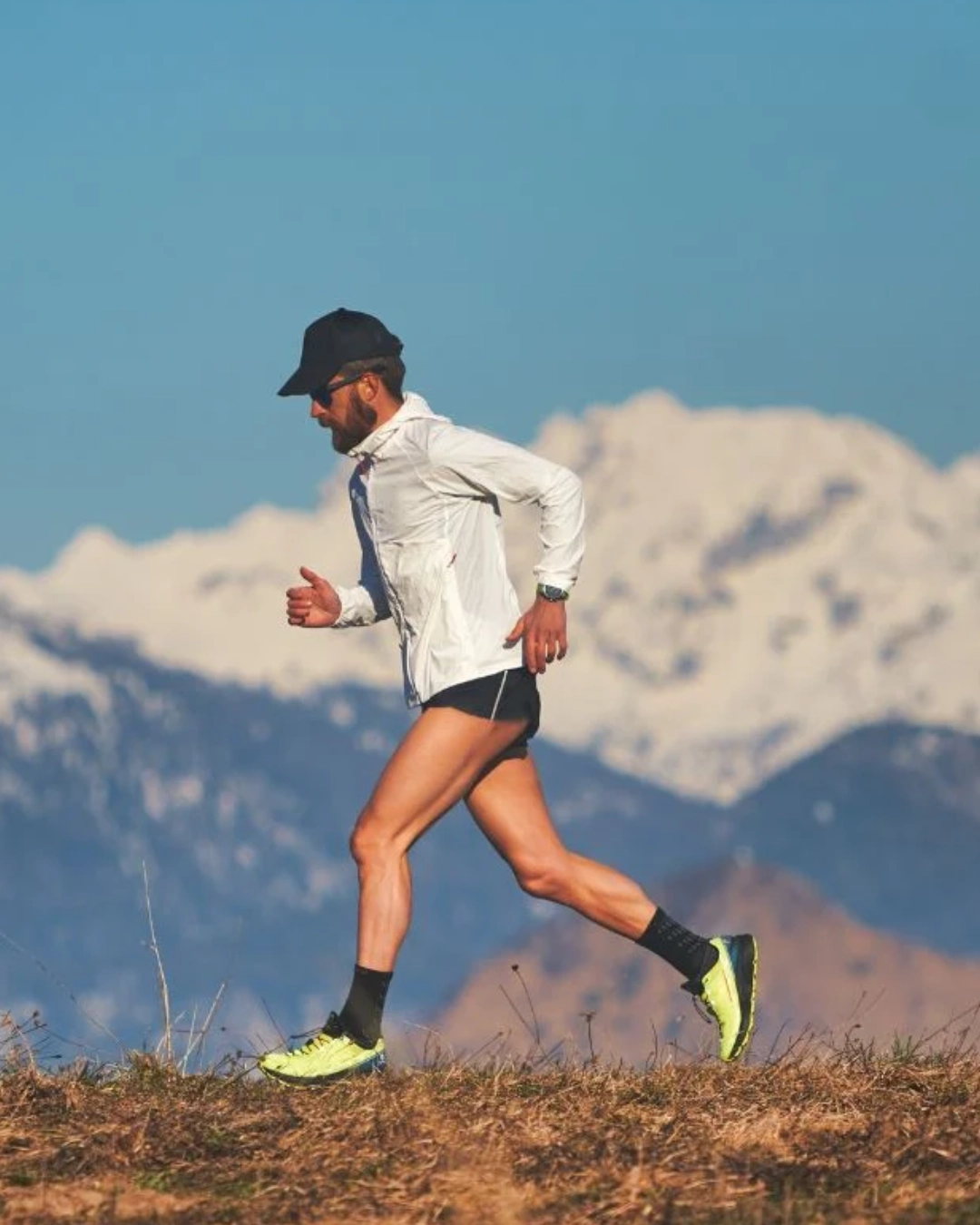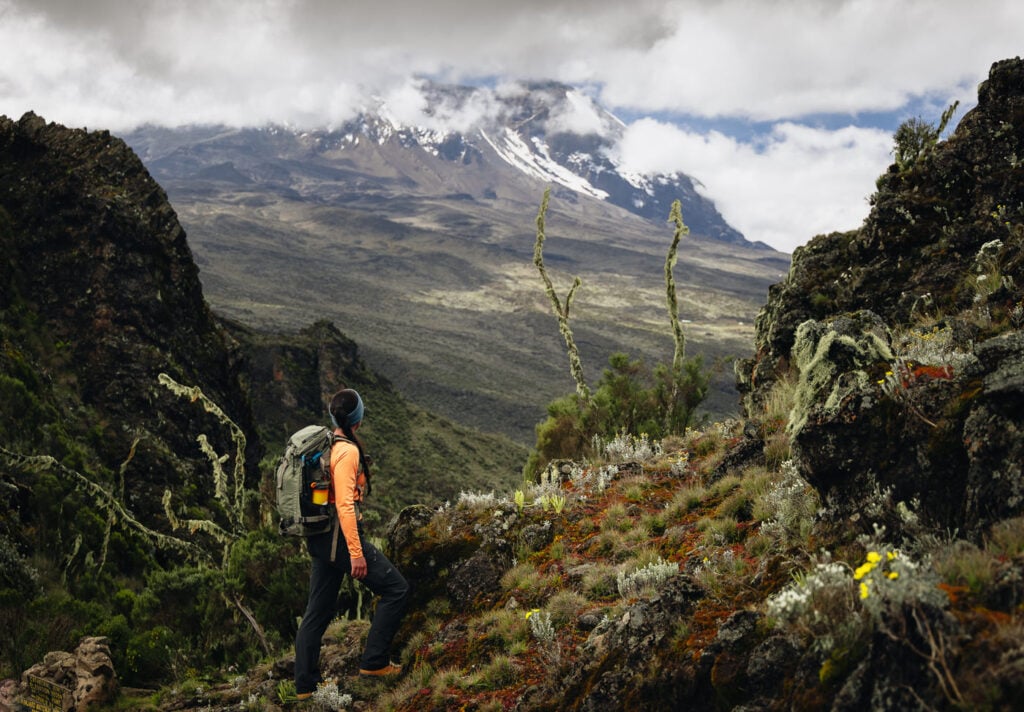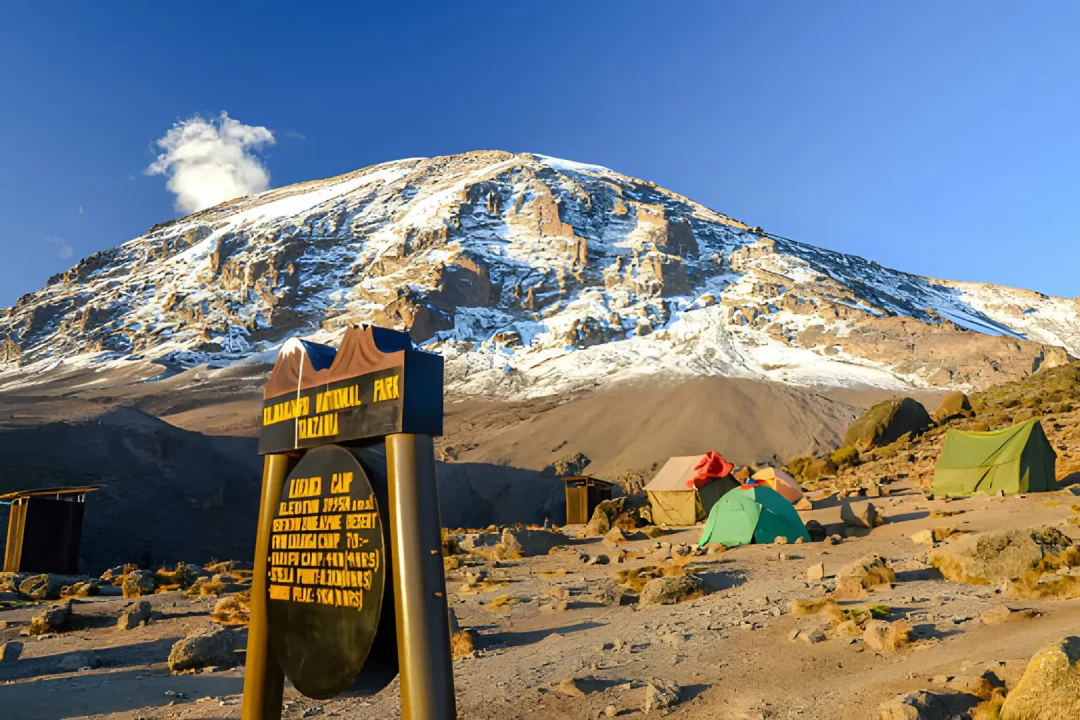Your Hiking Kilimanjaro Starts Here!
Expert-guided treks, unmatched safety, and life-changing experiences
Hiking Mount Kilimanjaro
Mount Kilimanjaro, standing at 5,895 meters (19,341 feet), is the highest free-standing mountain in the world and the iconic “Roof of Africa.” Located in Tanzania, it attracts over 40,000 visitors annually, making it one of Africa’s top travel destinations. Known for its beauty, Kilimanjaro offers a trek that doesn’t require technical climbing skills, only a healthy level of fitness and determination. With over a decade of experience and having guided more than 20,000 adventurers, Hiking Kilimanjaro offers expert insights into preparing for this unforgettable journey. Kilimanjaro’s hike is primarily challenging due to altitude, but with proper acclimatization, training, and guidance, climbers of all levels can reach the summit. Several routes, such as Marangu, Machame, Lemosho, Northern Circuit and Rongai, offer varying experiences, and the best time to hike is during the dry seasons, from December to early March and June to October. Safety is paramount, with professional guides, health monitoring, and medical support throughout the climb. Whether you’re a beginner or an experienced trekker, Kilimanjaro is a challenge that, with the right preparation, anyone can conquer.

HIKING KILIMANJARO ROURES
There are seven main Kilimanjaro hiking routes that lead to the summit, Uhuru Peak, the highest point in Africa. One of these routes starts on the northern side of Mount Kilimanjaro and the southern side. The best Kilimanjaro routes are Marangu, Machame, Lemosho, Shira, Rongai, Northern Circuit, and Umbwe.
OUR SCHEDULED GROUP CLIMBS TO KILIMANJARO
Join Our group climbs Mount Kilimanjaro, Africa’s highest mountain, departing every few days, as shown in the calendar below. Secure your spot in one of our open group expeditions and embark on the adventure of a lifetime. If you can’t find a climb that fits your schedule, reach out to us! We often have the flexibility to open new groups with travel dates tailored to your preferences.
JANUARY 2025

Kilimanjaro via Lemosho route - 8 days
From 10 January to 17 January
- Deposit $100
- Overnight stay in tents
- Guaranteed to run

Kilimanjaro via Lemosho route - 7 days
From 16 January to 22 January
- Deposit $100
- Overnight stay in tents
- Guaranteed to run

Kilimanjaro via Lemosho route - 8 days
From 18 January to 25 February
- Deposit $100
- Overnight stay in tents
- Guaranteed to run

Kilimanjaro via Machame route - 7 days
From 27 January to 3 February
- Deposit $100
- Overnight stay in tents
- Guaranteed to run
FEBRUARY 2025

Kilimanjaro via Rongai route - 7 days
From 6 February to 12 February
- Deposit $100
- Overnight stay in tents
- Guaranteed to run

Kilimanjaro via Machame route - 7 days
From 9 January to 15 February
- Deposit $100
- Overnight stay in tents
- Guaranteed to run

Kilimanjaro via Lemosho route - 8 days
From 14 February to 21 February
- Deposit $100
- Overnight stay in tents
- Guaranteed to run

Kilimanjaro via Marangu route - 6 days
From 16 February to 21 February
- Deposit $100
- Overnight stay in tents
- Guaranteed to run
Why Book With Hiking Kilimanjaro?
HIKING KILIMANJARO is a leading trekking outfitter in Tanzania, specializing in Mount Kilimanjaro hikes, high-altitude expeditions, and mountain climbing tours. They offer world-class experiences, focusing on safety, quality, and personalized service. They manage all aspects of trekking operations, leading expert mountain guides to ensure a safe, enriching, and unforgettable journey.


THE BEST GUIDES
At Hiking Kilimanjaro, we provide the best Kilimanjaro guides—professional, licensed, and highly experienced in safely leading climbers to the summit. We boast the highest guide-to-client ratio (1:2) for personalized attention, and a 1:1 crew-to-client ratio on summit night for maximum support. Our hardworking, team-oriented staff ensures your climb is safe, enjoyable, and successful. With our exceptionally high Kilimanjaro summit success rates, you’re in the best hands to reach Uhuru Peak confidently. Choose us for an unforgettable, expertly guided Kilimanjaro experience


Top-Quality Equipment for Your Kilimanjaro Adventure
At Hiking Kilimanjaro, we prioritize your comfort and safety with premium gear for every trek. Our waterproof, four-season mountain tents shield you from the elements, ensuring restful nights. Enjoy fresh, hot meals and clean drinking water to keep you energized. Mealtimes are relaxing in our spacious dining tents, equipped with tables and chairs. For convenience, we provide private, sanitary toilet tents and comfortable sleeping pads for a rejuvenating sleep. With our high-quality equipment, you can focus on reaching the summit while we handle the details. Experience the best Kilimanjaro trek with unmatched comfort and safety.


Your Safety is Our Top Priority
At Hiking Kilimanjaro, we are committed to ensuring your safety every step of the way. Our team includes certified Wilderness First Responders trained to handle emergencies. We conduct daily health checks, monitoring your pulse, blood pressure, and oxygen saturation to detect altitude-related issues early. For added peace of mind, our climbs include Kilimanjaro helicopter evacuation insurance, ensuring fast medical evacuation if needed. We also carry emergency oxygen on all treks to manage altitude sickness. With our comprehensive safety measures, you can focus on your climb, knowing you’re in expert hands.


Committed to Environmental and Social Responsibility
At Hiking Kilimanjaro, we believe in responsible tourism that benefits both people and the planet. As a proud member of the Tanzania Porters Organization (TPO), we ensure the fair and ethical treatment of porters, providing them with proper wages, meals, and working conditions. We follow Leave No Trace principles to preserve Kilimanjaro’s natural beauty, leaving the environment as pristine as we found it. To further our commitment to sustainability, we plant a tree after every climb, helping to combat deforestation and offset our carbon footprint. Climb with us and make a positive impact!
Everything You Need to Know: Your Ultimate Hiking Guide for 2025

Get Your PDF Packing List
Download our comprehensive guide and be fully equipped for your Kilimanjaro adventure.
What to Pack for Kilimanjaro?
For Hiking Kilimanjaro, pack essential gear for varying climates and conditions. Include a waterproof jacket and pants, a fleece or down jacket for warmth, moisture-wicking base layers, and trekking pants. A high-quality pair of hiking boots with ankle support is crucial, along with warm socks and gaiters. Don’t forget gloves, a hat, and a headlamp with extra batteries. Bring sunscreen, lip balm with SPF, and sunglasses to protect from high-altitude sun. A hydration system like a Camelbak, water bottles, and purification tablets are vital for staying hydrated. For personal items, pack a sleeping bag rated for sub-zero temperatures, a small first aid kit, toiletries, and a multi-tool. Also, carry energy snacks, camera, and necessary documents like passports and permits. Ensure you have a lightweight, durable backpack for your daily essentials and a duffel bag for your gear, which will be carried by porters.
Who Can HIKE Kilimanjaro?
Anyone in good physical condition and with the determination to reach the summit can climb Mount Kilimanjaro, regardless of age or ability. The youngest person to summit was 7 years old, and the oldest was 88, demonstrating that age is not a barrier if you are fit and prepared. Many differently-abled individuals have also successfully completed the climb, proving that with the right mindset and support, anything is possible. However, it is essential to be physically prepared for the demands of a multi-day trek at high altitudes. It’s crucial to focus on stamina, fitness, and mental resilience, as the climb is challenging due to its difficult terrain and changing weather. To improve your chances of reaching the summit, pace yourself by walking slowly, taking frequent breaks, and staying hydrated to minimize the risks of altitude sickness. Ultimately, the key to success is a strong will, careful preparation, and maintaining a steady pace throughout the journey.

How Much Does it Cost to HIKE Kilimanjaro?

The cost of Hiking Mount Kilimanjaro ranges from $2,000 to $6,000, depending on the operator and factors like the quality of service, accommodation, and safety. Costs include park fees, which cover conservation, camping, rescue, and guide/porter entrance fees. For a 7-day climb, park fees alone can range from $490 to $600. Additional costs include staff wages (around $80-$150 per climber per day), food, water, transportation, and equipment. The cost also varies by route; longer routes provide better acclimatization and higher summit success rates. Low-priced operators may compromise on staff welfare, equipment, and safety, potentially impacting your climb’s comfort and success. Quality operators focus on fair wages for staff, good equipment, proper safety protocols, and environmental responsibility. For the best chances of success, a 7-8 day climb with the Lemosho or Machame route is recommended.
Best time to HIKE Kilimanjaro
The best time to climb Mount Kilimanjaro is during its dry seasons: December to mid-March and late June to October, with January, February, and September being particularly favorable due to clear skies, mild weather, and low rainfall. These conditions provide excellent visibility, safer trails, and a more enjoyable trekking experience. While Kilimanjaro can technically be climbed year-round, April and November are best avoided due to heavy rains, which make trails muddy and slippery, reducing visibility and increasing the risk of accidents. Shoulder seasons like late March and late May may suit experienced trekkers willing to face unpredictable weather for fewer crowds. Ultimately, choosing the right season depends on balancing trail conditions, personal schedules, and desired solitude on the mountain.


Get Your PDF Packing List
Download our comprehensive guide and be fully equipped for your Kilimanjaro adventure.
How to Train for Climb Kilimanjaro
The Kilimanjaro Training Plan offers a structured routine designed to prepare you physically and mentally for Hiking Mount Kilimanjaro. The program should begin at least two months before your departure and include aerobic exercises, VO2 max training, strength training, and hiking.
Aerobic exercises like running, cycling, and swimming boost stamina.
VO2 max training involves high-intensity interval training (HIIT) to improve cardiovascular endurance.
Strength training targets the legs, core, and upper body for overall strength.
Hiking is the most effective training, starting with easier hikes and gradually increasing in difficulty.
Beginners should train for 3-6 months, focusing on consistency and dedication. Download the Kilimanjaro training plan for a comprehensive preparation for the summit.
Hiking Kilimanjaro with our expert team ensures a safe, tailored, and unforgettable experience. With certified guides, top-notch safety measures, and personalized support, we help climbers of all levels confidently conquer Africa’s highest peak.

JORDAN JOHN
Hiking Expert

JORDAN JOHN
Hiking Expert
- Phone:+255758974192
- Email:info@hiking-kilimanjaro.com
- PHONE: +255 758 974 192
- EMAIL: info@-hiking-kilimanjaro.com
Mt Kilimanjaro is situated in the east African country of Tanzania. Visitors arrive in the country either at Julius Nyerere International Airport near the capital, Dar es Salaam, or Kilimanjaro International Airport. From there, make your way to Moshi or Arusha, depending on the departure point for your chosen route. It is advisable to arrive a couple of days before your trek departs, so you will need to arrange accommodation if not included in your package.
The best times are during the dry seasons: June to October and December to February, offering stable weather and excellent trekking conditions.
Climbs typically last 5 to 9 days, depending on the route and acclimatization needs. Longer treks improve summit success rates.
While it is possible to climb for as little as $1500, we strongly advise against this. Operators charging low prices generally have numerous ethical shortcomings, including the mistreatment of staff. Depending on the time of year and the route you choose, you should expect to pay upwards of $2000 per person, with some “luxury” options exceeding $6000. Note, that these rates generally do not include transport, pre- and post-trek accommodation, staff gratuities or other expenses.
While space and weight are prime considerations, it is better to have something and not need it, than vice versa. Porters will assist in carrying the bulk of your belongings but you should limit yourself to essentials, ideally items that are tried and tested. Read our comprehensive Kilimanjaro Packing List.
Our Kilimanjaro hiking trip reviews offer real insights from fellow adventurers who have conquered the Mount Kilimanjaro with us. Explore their experiences, tips, and advice to help you prepare for your own epic journey. Whether it’s about the trails, guides, summit success, or packing essentials, our reviews provide honest feedback and firsthand accounts to inspire and inform. Check them out and get ready for your Kilimanjaro adventure! Hiking Kilimanjaro, Mount Kilimanjaro preparation, and summit tips are all covered in these detailed reviews.
Verified Unforgettable Adventure to the Summit: My 7-Day Machame Route Trek with HK Hiking Kilimanjaro I Hiking Mount Kilimanjaro in January 2025. It had been my dream to do the hike for two years. I was living in Africa and was getting ready to move to Europe. I was running out of time. I was going to trek with some colleagues using Hiking Kilimanjaro. I contacted Jordan John, the owner of Hiking Kilimanjaro Expeditions and told him I had very little time to do it. I asked him if I could join a group. There was a small group I could join, so I did. We climbed using the Machame route for 7 day.I loved everything about the hike. Our guides and porters were really wonderful – knowledgeable and caring. Hiking Kili is challenging but they made every effort to make us all comfortable and to meet each of us at our level. They were really good about motivating us too. The mountain is really beautiful and we thoroughly enjoyed the changing scenery and the guide’s explanations about the different species we saw along the way. Summit day was very hard. We woke up to a blizzard and had to summit in it. It was a long and bitterly cold climb but we all summited and were treated to magnificent vistas at Stella Point and ultimately at Uhuru. There was singing and dancing with the porters and the guides too. We bonded with them a little bit in the dining tent and over the hikes. It was fascinating to learn about their lives and how they became guides/porters, their first time on the mountain, etc… I can’t thank Hiking Kilimanjaro enough for this unforgettable adventure! I highly recommend them for a Hiking Kilimanjaro.Verified HK HIKING KILIMANJARO TOUR OPERATOR IS AMAIZING IN TANZANIA We summitted Kilimanjaro in early November 2024 with HK hiking kilimanjaro through the 7-days Machame route and I recommend them 100% ! The 2- mountain guides Sam and Shedrack were super wonderful time, careful and knew exactly what they were doing, we always felt safe. The other crew members potters and chef were also very nice to us with a lot of kind gesture and I must admit the cook was really talented and surpassed my expectations after each day on the mountain Kilimanjaro We recommend HK hiking kilimanjaro 100%! :)Verified We had the most amazing tour to the top of Mount Kilimanjaro with HIKING KILIMANJARO Expeditions! We did the Machame Route in 6 We had the most amazing tour to the top of Mount Kilimanjaro with HIKING KILIMANJARO Expeditions! We did the Machame Route in 6 days (originally planned 7 days but after half of the trip our guides recommended to cut it one day short which was a good decision).The whole team was just incredible, especially our 2 Professional guides CP and Sam. They were professional, fun and so helpful during the whole trip. Without their positivity and expertise we would have never made it all the way to the top.It is incredible how well organized everything was from start to end. The porters did an amazing job in carrying all the gears to the next camps and setting up our tents even before we got there - so thanks a lot to Michael, siry, patel, Stewati, Elly and Arnod who were all so friendly and funny and we really enjoyed our two dance sessions. Special thanks also to our porter and waiter Jeremia who always woke us up with a hot cup of tea or coffee in the early mornings and always brought us our meals with a smile and tried to teach us some basic words. We were so amazed how it was possible for our great chef Frank to cook with so much flavor and so many different delicious meals, even in a basic campsite. Frank always made the tastiest foods - soups as a starter, always a different main course and often some fruits for desert. The meals could not have been better.So overall we had the time of our lives on the mountain and can recommend doing the tour with HIKING KILIMANJARO to everyone!Verified Mount Kilimanjaro with HIKING KILIMANJARO the excellent and reputable tour company for edventure in tanzania The expedition with HK HIKING KILIMANJARO was outstanding. Everything from the airport transfer to the peak of the mountain and back was seamlessly done and arranged. The guides—CP, Saitoti, Amani, Tamo, Michael, and Leonard—were amazing and helped guide us along the way, made us feel very comfortable, and made us laugh. The food was delicious with our chef, John. The porters were amazing and got there before us every day to set up the tents (Michael was very well organized). This trip changed my entire life, and I can’t explain how amazing it was in words. I highly recommend HIKING KILIMANJARO COMPANY, a reputable operator for Kilimanjaro hikes.Verified 12 of us make the 8-day Lemosho hike We had a great time with Hk HIKING KILIMANJARO. The tour guides and the impressive carrier team made our Kilimanjaro experience so great. There were twelve of us on the 8-day Lemosho hike and our guides Frank, Hamedi, Munuo, Jackson, Gabriel and Priscuss took SO good care of us, organized everything perfectly and made the hike to the highest mountain in Africa with their good mood, singing and stories a really entertaining experience! A special thanks goes to one of our waiters, Iddi, who was super accommodating and gave his best with his kindness and generosity. The communication was fantastic from the moment we contacted HK HIKING KILIMANJARO – they made several video calls with us and answered our dozens of questions, so we all felt very confident that we were in safe hands. 10/10 would recommend it!Verified HIKING KILIMANJARO is the best company on the mountain. I have just finished my 8-day hike to Kilimanjaro and must say that HIKING KILIMANJARO is the best companion on the mountain. Every day our crew exceeded the expectations of their work to support us. Our guides Ravi and Jackson were always very attentive to our needs. Ravi’s ability to know exactly what we needed without even having to ask for it was amazing and an important reason everyone reached the summit. Ezekiel cooked delicious meals every day and Erick always made sure we had more than enough food to keep our energy levels high. I have seen how many other companies are operating on the mountain, and none of them have been able to provide anything like the level of genuine care and support that HIKING KILIMANJARO has provided. Do not hesitate to book your next adventure with them!Verified 8 Days Lemosho route Hike Kilimanjaro HK Hiking Kilimanjaro made my Expedition on Mount Kilimanjaro a phenomenal one by providing such an incredible and very vibrant team (Jordan the guide, Lala the chef, rich the waiter and the porters Eric, Ema, David). As a hiker I look for an authentic indigenous experience and the team provided exactly that.Climbing the freestanding highest mountain in Africa is not easy but the Spirit of the HK HIKING KILIMANJARO team made the joy more memorable than the pain, I’m now back at home looking for an excuse to go back to Tanzania for another unforgettable wildlife safari with HIKING KILIMANJARO expedition.Verified 7-day Machame route We walked the 7-day Machame route with Kilimanjaro Hiking Expedition Company. The team was so amazing. They do everything to make you feel happy and let you know every day what will happen the next day. When things were difficult, they helped you keep going. Sometimes the porters came back to carry the day packs for the last part. Three of our group of six made it to the summit. The information on what to expect by the summit was complete.The food changed every day and was delicious. We decided to go to the toilet on top of the mountain, which was a very good idea. There was also a toilet tent when we stopped at the lava tower for lunch. They always had a place to put our supplies at the camp on Kilimanjaro.I would definitely recommend Hong Kong Hiking Expedition CompanyVerified 8 days Lemosho route No words can explain how the trip was, just magnificent. Jordan the director handled us quite well.Our guide Sam met and exceed our expectations,the porters did an excellent and hard job.Verified Best customer services on earth Hiking Kilimanjaro Expedition responded with valuable detailed information in timely manner any time I had questions. I had a lot of questions. They were very flexible. I was able to choose my own lodge and hike start day. The transfer driver were nice and very professional. They provided pick up / drop off service to and from Kilimanjaro international airport as well as to and from my villa near Mweka Gate to HK Hiking Kilimanjaro Expedition Office. We had very good guides. Baraka was our Lead guide. Amani was the 2nd guide. Each one did excellent good job of briefing us each day on what to expect. Staff was phenomenal. The service they provided made us feel like royalty. My two Trek mates from England were a blast to be with. How got really lucky. We joked around and had loads of fun with entire staff. While on mountain, we felt like a family. It was a memorable experience. All of us made it to the top summit.






